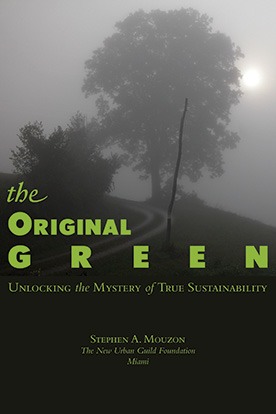search the Original Green Blog

Streets and the streetscapes that surround them have several measurable things that can tell us which standard of Walk Appeal the street provides. We'll look at the things that can be measured in this post, then talk about the things that can't be measured afterward.
View Changes

The more frequently you change someone's view as they walk, the better you entertain them. Entertaining those who are walking means they'll likely keep walking. Two simple geometric moves change views more quickly than anything else: The closer the building wall gets to the sidewalk, the more quickly your view of any given point changes. And the narrower the building, the more quickly you walk past it. Main Streets with narrow stores like in the picture above do an excellent job on both counts.
Street Enclosure

The best streets on earth have building walls on either side that are as tall as the space between the building faces. Technically speaking, they have a street enclosure of 1:1 or greater. A street with good enclosure feels like an outdoor room, and people prefer outdoor rooms to streets with little enclosure that just bleed out into the landscape. A 1:1 or greater enclosure is easier in Europe because their streets are narrower. We work hard in the US to achieve enclosures of 1:3 in most places, but can still exceed 1:1 occasionally like on 14th Street in Washington DC shown above.
Window of View

There are two prime measurements of Window of View as well: horizontally along the sidewalk, and height. The ideal percentage of glass at eye level along the sidewalk is around 70%. Why not go all the way to 100%? Wouldn't that be more interesting? While you would have slightly more of a view into the interior of the building, 100% glass is butt-glazed glass as far as the eye can see, undifferentiated by window frames, pilasters, and other building elements. Having too little glass is a bigger error, as there are few things more boring if you're walking than passing along a blank building wall.
The minimum window sill height is 8 inches. Glass run all the way to the sidewalk is a bad idea because the base of the wall is subject to more damage and should be built of things that can be patched and repainted. Glass fails completely on both counts. The maximum sill height should be 30 inches, or roughly the height of a restaurant dining table. The minimum head height should be 8 feet above the sidewalk, although taller window heads can be striking.
Shelter

The best building fronts shelter people who are walking from the elements, at least at the front door. In rainy or hot and sunny climates, near-continuous shelter is much better. Shelter can be composed of fabric awnings as shown here, or it can also be made of hard awnings, porch roofs, galleries, or arcades. If a place has an existing tradition of shelter elements such as the galleries of New Orleans, consider reinforcing that tradition.
Goals in the Middle Distance

Things that border the sidewalk are the most important measurable means of enhancing Walk Appeal, but they inevitably stutter or fade somewhere along a street. With no immediate reason to continue, people walking might turn back. But if there is a goal in the middle distance, that may entice them across those less excellent stretches in the streetscape.
It is important to note that goals in the far distance, like a mountain, aren't nearly so effective because you don't have the hope of walking all the way there. But goals in the middle distance (1 block to 2 miles) are places you might walk to. Because they're in the middle distance, you don't have to walk too far until their perspective changes visibly. This continues to reel you in as you walk closer.
Goals in the middle distance should be fairly tall, otherwise things in the foreground can easily block your view of them. Often, as pictured above, they might be tall buildings or even towers. They can also be uninhabited elements such as obelisks. FWIW, town planning geeks call goals in the middle distance "terminated vistas."
Turning the Corner

Even if you do a great job with everything we've talked about so far, you could still screw up Walk Appeal when you turn the corner. If you're walking on a really good front street (like the Main Street leading off to the left here) and turn off on a side street, you'll typically be facing the side of a building (hence "side street.") Sides of buildings are often longer than the fronts on commercial streets because commercial real estate is often valued by the "front foot." Longer building faces are usually more boring faces. This is compounded by the fact that it's really easy to leave side walls of commercial buildings nearly blank so you can put merchandise shelving against them. You therefore have to work at it to do as good a job as the building above did on its side street (the right side.) Without good side street walking, people don't walk to the Main Street nearly so much.
As I said Wednesday, we'll look at the Walk Appeal things that can't be measured next. After that, we'll explore some really stunning economic development implications of varying degrees of Walk Appeal.
~Steve Mouzon
Other Walk Appeal posts on the Original Green Blog:
Sprawl Repair - A 12-Step Program
I've also started a Walk Appeal BlogOff that lists everyone's posts on Walk Appeal.

You'll receive an email from me with the subject line "Mouzon Design: Please Confirm Subscription." Click Yes to confirm your subscription for Walk Appeal book updates.
Legacy Comments
Steve Mouzon · Board Member at Sky Institute for the Future
This is the second of several posts that explain an idea called Walk Appeal that I've been working on for several years. It promises to answer a lot of important questions, including "what can we do to make businesses in this walkable place more viable?" Please have a look, and join the discussion!
Xianhang Zhang · Co-founder at Product Design Guild
I think people density also plays a big part in walk appeal.
Roland Beinert · University of Idaho
Hi, Steve. Great posts on an important topic. I was comparing what you say here to what Jan Gehl says in his book Cities for People. He mentions a lot of what you do, but also talks a lot about the design of the sidewalk itself. He talks about the width of the sidewalk, and the placement of signs, lampposts and other things that can sometimes make a narrower sidewalk feel like an obstacle course. The number of driveways interrupting the sidewalk is also important. The pavement should be smooth and not slippery. Stairs should be avoided when possible. I suppose most of these are obvious, but they are definitely measurable, too.
He mentions something he calls the "tiring length perspective", which is when a pedestrian can see the entire route at a glance if the road is too straight and long. In that case, pedestrians can feel tired before they even begin the walk. So streets should be divided up into manageable segments from one open space to the next, or perhaps the street should wind a bit to break up the view.
I look forward to your next post.
Lisa Welch · Planner at City of Syracuse Office of Zoning Administration
We have so much to learn... thanks Steve!
Buddy Barker · Beggar Extradanairre at I work for food
Oh, trees and fire-hydrants! They make the walk even better!
Steve Mouzon · Board Member at Sky Institute for the Future
Here's the latest Walk Appeal post, which examines the economic development implications for walkable neighborhood businesses... and they are stunning, IMO. Please have a look and let me know what you think!
http://www.originalgreen.org/blog/walk-appeal-impact.html
Jan Hogan · Gloversville High School
Walking? In the winter when it’s, like 60 degrees, ya gotta love it. Summer, when it’s 110 degrees, er, not so much. We look into Summerlin’s walkability in the Oct. 16 issue.
3,068+


